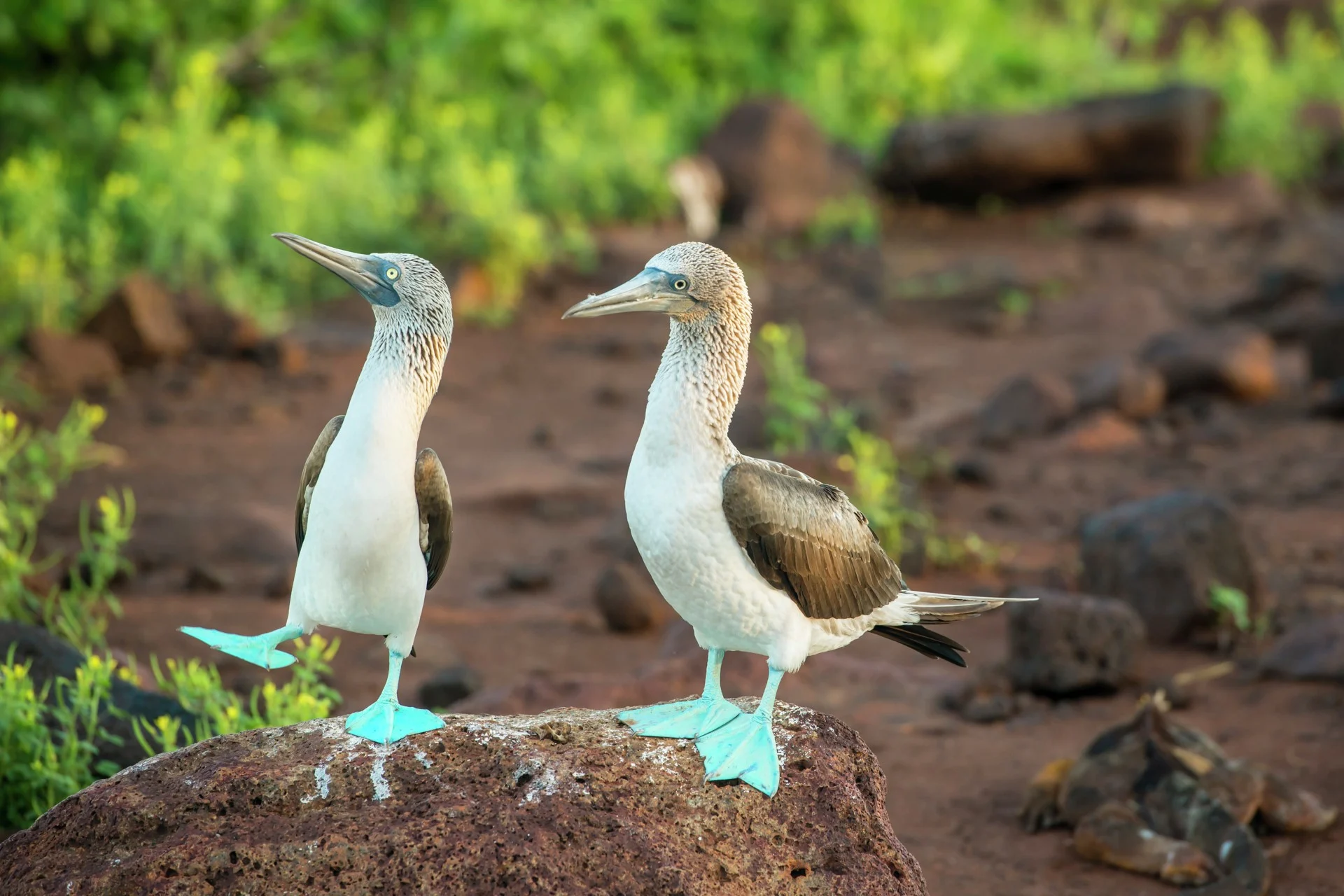The Big 15
One of the most defining factors of Galápagos is the wide selection of animal species that are endemic to the islands. The “Big15” animals are the most iconic breeds across the archipelago. During your trip to Galápagos, you are likely to encounter the majority of these animals.
4 mins read
Because the Galápagos Islands were undeveloped for millions of years, the animals across the region have no fear of humans. Travellers are thus able to have up close and personal interactions with a vast variety of species. From marine mammals to birds to reptiles, there are many extraordinary animals that have found a home on the islands that are covered in volcanic terrain. You will encounter many of these creatures during your expedition.
Flightless Cormorant
The flightless cormorants are small, strange birds. It is the only type of cormorant that cannot fly. Because of their interesting heritage, the cormorant mating rituals are unique and usually include a period of time where the females fight for male attention.
Red-Footed Booby
The red-footed booby is much less common than the blue-footed and Nazca booby breeds. These active birds often travel almost 90 miles in their search for food. Because they are nimble, these birds are agile and focused as they hunt for fish.
Galápagos Hawk
The Galápagos hawks are constantly preying on smaller birds, lizards, and turtles that nest around the islands. This dark coloured bird has incredibly broad features. Since this species is endemic to the Galápagos, it has a very small world wide population count.
Marine Iguana
These colour-shifting creatures search for prey above and beneath the surface of the water. Algae is the primary food source for this variation of iguana. This endemic breed is the only marine lizard species across the entire globe that spends time in the ocean.
Galápagos Flamingo
Because they eat shrimp, these birds have some of the brightest features of any species. Although they can be over 4 feet tall, they still only weigh around 6 pounds, on average. These birds typically stand on one foot to conserve body heat.
Galápagos Albatross
The Galápagos Albatross is somewhat difficult to encounter because it resides solely on Española Island. This is the largest bird in the region with a wingspan over eight-feet long and weighing 11 pounds. These birds have unique mating rituals and extensive flight routes.
Blue-Footed Booby
Although blue-footed boobies are incredibly popular, catching a glimpse of them can sometimes be difficult. This species has bright blue webbed feet that are striking upon first glance. Their webbed feet only turn blue when they reach full maturation.
Nazca Booby
The Nazca booby is not unique to the Galápagos Islands. Although these small creatures appear to be gentle, they often take aggressive measures to ensure their survival. With a black monochrome body and an orange beak, this species is the largest of the booby family.
Galápagos Sea Lion
Thankfully, you will likely encounter these adorable sea creatures on almost every one of the Galápagos Islands. Although they spend much time basking in the sun, they have playful personalities. Depending on their gender, these creatures weigh between 200 and 600 pounds.
Santa Fe Iguana
This lizard is constantly blending in with the natural habitat on Santa Fe Island. This stocky lizard can surprisingly grow to weigh almost 200 pounds. Although these creatures can easily blend in with their environment, they typically have a yellow colouring.
Galápagos Penguin
The Galápagos Penguin is an extremely unique species. This is the only type of penguin that can be found north of the Equator. This endemic species thrives in tropical altitudes and lives alongside the tourists that are exploring off the shore and across the land.
Greater Frigate Bird
The greater frigate birds are distinctive because they have a large, red pouch that can be found on the underside of their neck. These birds often have one mate for the entirety of their lifetime. In addition, they often travel large distances across Galápagos.
Galápagos Fur Seal
Galápagos fur seals are only born in litters of one. These small seals are social, but their population has decreased steadily over the last few years. Although they spend roughly 30% of their time on shore, fur seals prefer nesting in areas that provide partial shade.
Land Iguana
These large reptiles can live up to 60 years, growing to over three feet long. Because of their size, these lizards often travel and bask in small groups. In general, this breed prefers to reside on the dry lowlands of specific islands.
Galápagos Giant Tortoise
The Galápagos Giant Tortoise is an endangered animal that has the ability to live well over 100 years. Because of their extensive life and endangered population, these animals are perhaps the most popular wildlife attraction found on the Galápagos Island.
